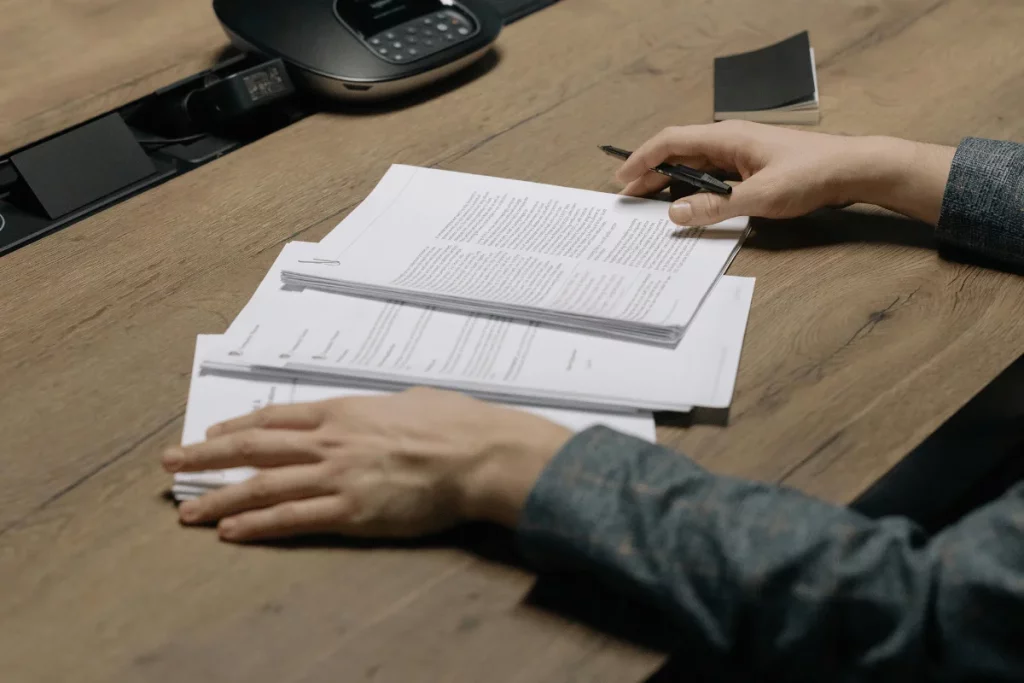Disclaimer - The information provided in this article is for educational purposes only and does not constitute legal advice. While we try ensure the accuracy of the content, it should not be relied upon as a substitute for professional legal counsel. For specific legal issues or concerns, consult with a qualified attorney or legal professional.
Selling a business or its assets is one of the most important transactions you'll ever undertake, and you must get it right the first time.
One way to ensure a successful sale is to have a detailed asset purchase agreement checklist against the same document.
But what's an asset purchase agreement, and how do you make a diligent checklist to ensure you capture all the important steps?
Here's what to include in your asset purchase agreement checklist.
Before we dive into the details, it's important to note that creating the checklist might not be so easy. You'll need the help of experienced M&A experts to negotiate a good asset purchase agreement and draft its checklist.
At Exitwise, we help you interview, hire, and manage your dream M&A team to create the smooth exit you deserve. Reach out to one of our M&A advisors today to get started.

An asset purchase agreement is the primary legal document that indicates the terms and conditions for the purchase of specific assets (and sometimes liabilities) of a business or company by another business, company, or an individual.
The document is usually drafted by the buyer's legal team and refined through negotiations with your (sell-side’s) attorneys.

When evaluating the asset purchase agreement, your goal should be to ensure that it is fair to you and enforceable under local, state, or national laws.
Here's what to ensure your APA contains:
Ensure the APA includes your and the buyer's personal information, including legal names, contact details, and physical address.
The APA should define the terminology used within it, especially regarding what constitutes an “asset” or “liability”, the sale price, and the terms of payment.
Your APA can comprehensively describe all the assets and liabilities pertaining to the sale.
Ensure all the tangible and intangible assets are listed, including the correct descriptions of each. You can also describe the assets according to their class to ensure you and the buyer know exactly what's on sale and its condition.
Some common intangible assets may include customer lists, taxable goodwill, intellectual property, and contracts. Depending on the sale, common tangible assets may consist of inventory, real estate, accounts receivable, machinery, and office supplies.
The purchase price and payment terms may be some of the most crucial aspects of a business or asset sale.
Check that the prices and allocations are correct because they may mean more tax liability to you, depending on how you structure the sale.

As a seller, you can make representations about yourself to the buyer in terms of the status of your business's contracts, assets, and liabilities. Ensure you support your asking sale price and show proof of ownership of the assets.
You should ensure the buyer also makes representations about their authority to buy your business and its assets and liabilities or their ability to pay.
Additionally, check that the warranties and representations outline how you and the buyer allocate risk between yourselves.
The asset purchase agreement won't be complete without showing the expected closing date for the sale to avoid unnecessary delays from the buyer.
You also need to ensure it stipulates what needs to be done before closing, such as acquiring any required third-party consent.
You should ensure your business buying checklist includes evaluating the validity of the stakeholders’s signatures, which makes the APA legal and enforceable.
As the seller, you should show the buyer that you have notified all the necessary stakeholders of the sale, such as employees, suppliers, and shareholders, if any.
Without a proper dispute resolution strategy in place when you sell your business, you may expose yourself to costly legal issues if differences arise that you are unable to solve amicably.
Ensure your APA checklist includes this section.

At the time of closing the business sale, you will exchange several documents with the buyer that derive from the covenants in the APA.
Make sure your APA checklist includes following up on these covenants and their attendant documents, such as employment or consulting, lease, and escrow agreements.
The APA may include an indemnification clause to protect you and the buyer from potential damages, liabilities, or losses arising from the transaction.
For example, you may want to protect yourself and the buyer from any breach of contract, covenants, or representations.
It's critical to ensure you and the buyer have filed all the necessary paperwork with the relevant authorities.
Have a section in the checklist dedicated to checking, evaluating, and validating the paperwork.
Since the buyer will want to see your timeline for transferring your business’s assets to them, you should ensure they also give you a timeline for the assumption of the liabilities they have agreed to take up.
It may be challenging to resolve differences amicably if they arise after the transaction.
Besides outlining the dispute resolution mechanism, check that the APA includes the rules for terminating it if this is deemed necessary.

Your APA checklist may have an internal due diligence checklist against which you'll tick off each item, such as financial documents related to the sale.
The due diligence checklist can be required where reverse due diligence may overlap with the APA itself, such as provisions for regulatory compliance and third-party consent.
Negotiating a favorable asset purchase agreement and making a detailed internal checklist for it requires legal help.
At Exitwise, we can help you find the best M&A attorneys who can help make your APA favorable and enforceable under existing laws. Set up a call with one of our M&A advisors today so we can help you find the best attorneys to smoothen your agreement negotiations and fulfillment.
The main benefits of an APA checklist can be the confidence and peace of mind from knowing that you haven't missed any crucial step that may spoil the deal.
The checklist also helps you identify issues or red flags that may terminate or delay the APA and the entire sale.
Additionally, a good checklist may help you assess whether you are on the right path to fulfilling your obligations under the agreement's deadlines.

Here are common shortcomings to avoid when negotiating and drafting an APA:

Let's end the discussion with common questions about APA checklists:
The best way is to have experienced M&A attorneys negotiate the asset purchase agreement for you.
We can help you interview, hire, and manage the best corporate attorneys and other M&A experts for a successful sale.
Due diligence is important in the APA-making process because it helps you identify and address any potential risks associated with the assets on sale, such as encumbrances.
Handling the risks in advance may save the deal.
An APA can transfer liabilities from you as the seller to the buyer. However, the agreement transfers only the specific liabilities that the buyer agrees to assume and become contractually liable for.
You'll have to review the agreement carefully with the help of your M&A attorney to understand the scope of the assumed and unassumed liabilities.
Since negotiating a favorable asset purchase agreement can be challenging, it's advisable to work with an experienced M&A lawyer and other experts related to a business's assets sale.
The attorney can also help you draft a comprehensive internal asset purchase agreement checklist to ensure you don't miss any critical step that may sink the sale.
Reach out to us at Exitwise to help you interview, recruit, and manage the best corporate attorney and other M&A professionals to maximize your exit.
Let Exitwise introduce, hire and manage the best, industry specialized, investment bankers, M&A attorneys, tax accountants and other M&A advisors to help you maximize the sale of your business.

